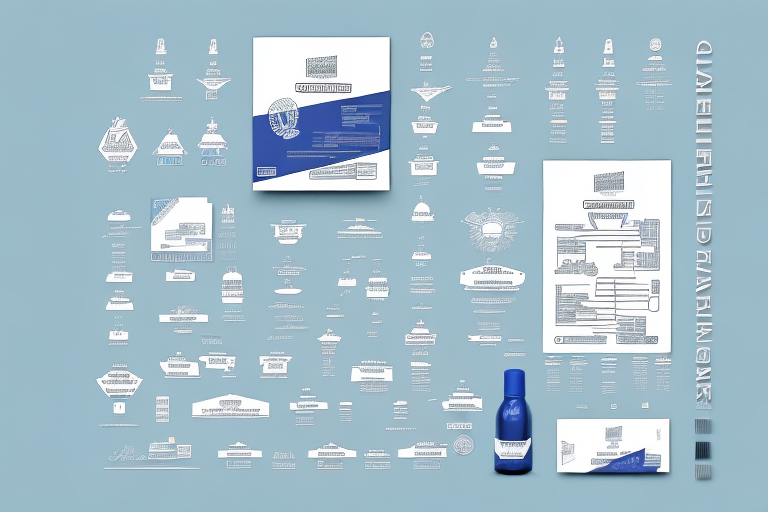Labeling and packaging compliance is a critical aspect for businesses operating in various industries. It ensures that products are accurately and safely presented to consumers, while also meeting regulatory requirements. This article aims to provide a comprehensive guide on labeling and packaging compliance, covering various subtopics such as the importance of compliance, essential checklist components, common mistakes to avoid, regulatory requirements, best practices, and future trends. By the end of this article, readers should have a clear understanding of how to create an effective labeling and packaging compliance checklist, as well as the significance of adhering to these guidelines.
Why Labeling and Packaging Compliance is Important for Businesses
Compliance with labeling and packaging regulations is of utmost importance for businesses for several reasons. First and foremost, it ensures consumer safety. Accurate and clear product labels provide essential information, such as ingredients, allergens, usage instructions, and potential hazards. Ensuring this information is easily accessible and correctly displayed helps protect consumers from potential harm and allergic reactions.
Secondly, adherence to labeling and packaging compliance standards builds trust and credibility among consumers. When businesses consistently meet regulatory requirements, they demonstrate a commitment to high-quality products and customer satisfaction. This can lead to increased brand loyalty and positive word-of-mouth recommendations.
In addition to consumer safety and brand reputation, labeling and packaging compliance also mitigates legal risks. Non-compliance can result in costly fines, product recalls, and damage to a company’s reputation. By staying up-to-date with the latest regulations and following the best practices, businesses can avoid these potential pitfalls.
Furthermore, labeling and packaging compliance plays a crucial role in international trade. Different countries have their own set of regulations and requirements for product labeling and packaging. Ensuring compliance with these standards is essential for businesses that want to expand their market reach and engage in global trade. Failure to meet international labeling and packaging requirements can lead to barriers to entry and hinder business growth.
Lastly, labeling and packaging compliance is not only important for businesses but also for the environment. Many regulations focus on promoting sustainable practices, such as using recyclable materials and reducing waste. By following these guidelines, businesses can contribute to environmental conservation and demonstrate their commitment to corporate social responsibility.
Understanding the Basics of Labeling and Packaging Compliance
Before delving into creating a comprehensive labeling and packaging compliance checklist, it is essential to have a solid understanding of the basics. Compliance requirements vary depending on the industry and geographical location, but there are some common elements to consider.
Firstly, labels must accurately identify the product and its contents. This includes the product name, quantity, ingredients, and any applicable warnings or precautions. Furthermore, labels should adhere to specific font sizes, legibility requirements, and language preferences dictated by regulatory bodies.
Packaging compliance involves ensuring the product is adequately protected during shipping and handling. This includes choosing appropriate materials, ensuring proper sealing, and considering temperature, moisture, and environmental conditions that could affect the product’s integrity.
Furthermore, businesses must be aware of specific labeling and packaging requirements for specific industry sectors. For example, food and beverage products must comply with nutritional labeling, allergen warnings, and any specific health claims. Pharmaceuticals need to display dosage information, precautions, and side-effect warnings. By understanding the industry-specific compliance standards, businesses can tailor their checklist to address these unique requirements.
Another important aspect of labeling and packaging compliance is ensuring that the information provided on the labels and packaging is accurate and up to date. This includes regularly reviewing and updating product information, such as ingredient lists, to reflect any changes or updates. It is also crucial to ensure that the labels and packaging are free from any misleading or false claims that could misinform consumers.
In addition to accuracy, labeling and packaging compliance also involves proper placement and visibility of the required information. Labels should be easily visible and accessible to consumers, allowing them to quickly and easily identify important details about the product. This may include placing labels on the front or top of the packaging, using clear and legible fonts, and ensuring that the information is not obstructed by other elements of the packaging.
Essential Components of a Labeling and Packaging Compliance Checklist
A comprehensive labeling and packaging compliance checklist should cover various aspects to ensure all necessary elements are considered. Here are some essential components to include:
1. Regulatory Requirements: Identify the applicable labeling and packaging regulations based on your industry and geographical location. Include relevant laws, guidelines, and standards issued by regulatory bodies such as the Food and Drug Administration (FDA) or the International Organization for Standardization (ISO).
2. Label Design Guidelines: Specify the requirements for font size, legibility, language, and the inclusion of mandatory elements such as product name, quantity, ingredients, allergens, and warnings. Consider specific industry requirements when designing labels.
3. Packaging Materials and Integrity: Assess the suitability of packaging materials based on product characteristics and potential hazards. Consider factors such as durability, tamper-evident features, and protection against external factors like temperature or moisture.
4. Manufacturing and Export Requirements: Incorporate considerations related to production processes, quality control measures, and any specific export guidelines or certifications that may be necessary for your industry.
5. Record Keeping: Establish a system for maintaining records of labeling and packaging compliance. This includes maintaining copies of label designs, production specifications, testing reports, and any relevant documentation to demonstrate compliance.
6. Quality Assurance and Testing: Implement procedures for ongoing quality control, including regular testing to ensure labels and packaging meet specifications. Evaluate packaging integrity, legibility, and compliance with relevant regulations.
By including these essential components in your labeling and packaging compliance checklist, businesses can systematically identify and address potential compliance gaps, reducing the risk of non-compliance and associated penalties.
7. Training and Education: Provide training and education to employees involved in labeling and packaging processes. Ensure they are aware of the regulatory requirements, label design guidelines, and quality assurance procedures. This will help them understand their roles and responsibilities in maintaining compliance and producing high-quality labels and packaging.







